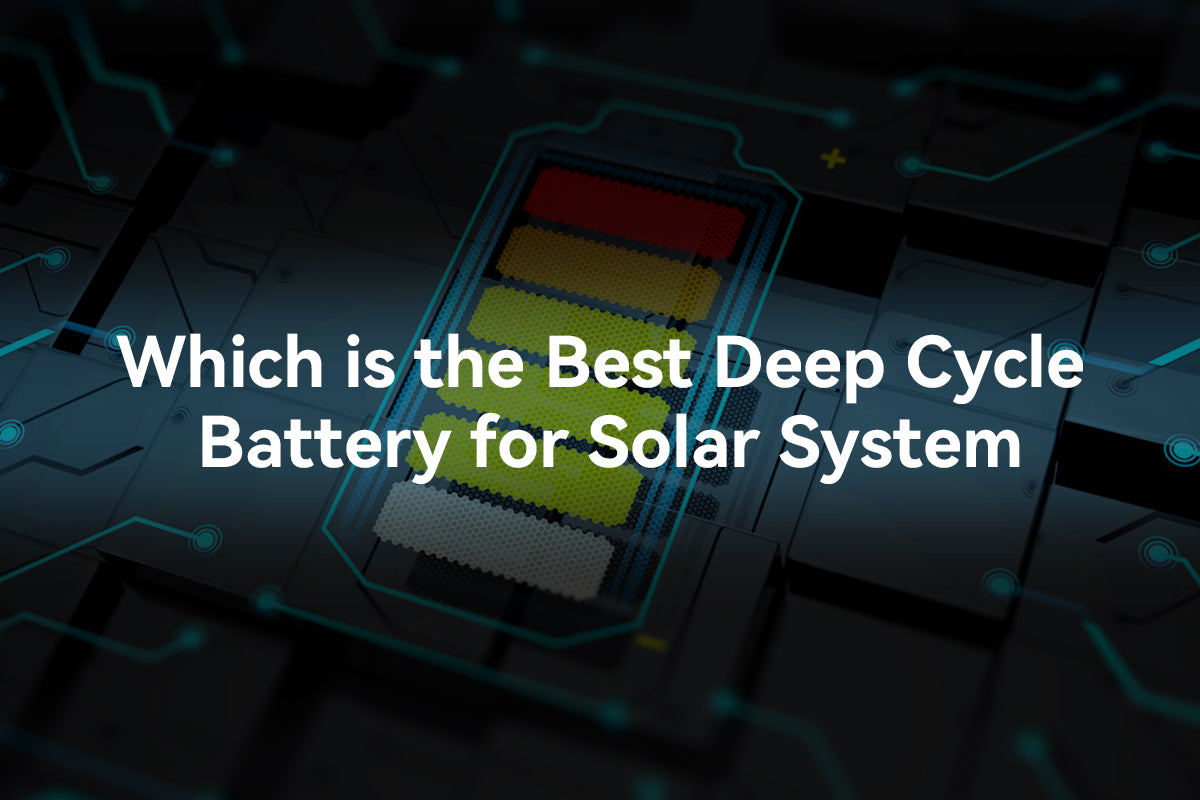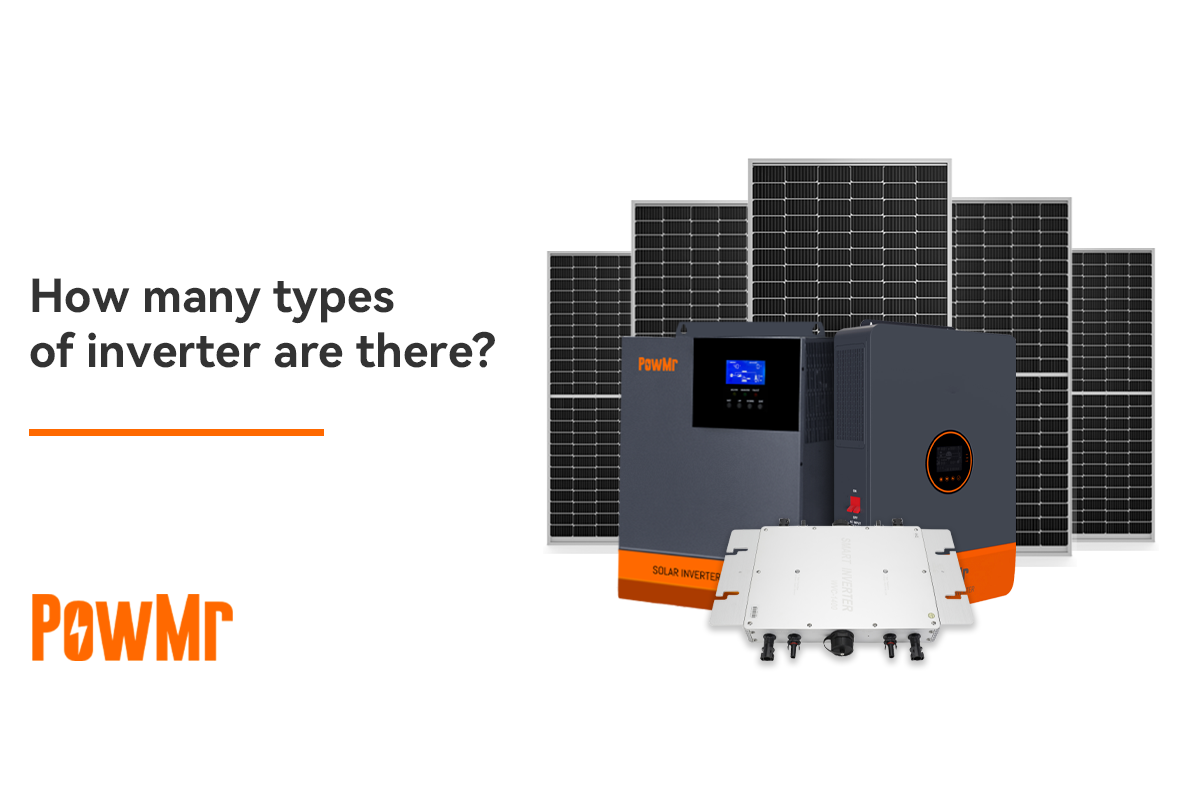กังวลว่าพลังงานทั้งหมดที่ผลิตโดยแผงโซลาร์เซลล์และเก็บไว้ในแบตเตอรี่จะถูกใช้หมดโดยอินเวอร์เตอร์, แม้ว่ามันจะไม่ได้เชื่อมต่อกับโหลด, จนถึงจุดที่คุณไม่สามารถใช้เครื่องใช้ไฟฟ้าของคุณได้อย่างถูกต้องในระหว่างที่ไฟดับ?
อ่านต่อไป เราจะอธิบายว่าโหมดสแตนด์บายของอินเวอร์เตอร์คืออะไร อินเวอร์เตอร์ใช้พลังงานเท่าไหร่เมื่อไม่มีโหลด และวิธีการ ลดการสิ้นเปลืองไฟฟ้า.
กระแสไฟฟ้าที่ไม่มีโหลดของอินเวอร์เตอร์คืออะไร?
กระแสไฟฟ้าไม่มีโหลดของอินเวอร์เตอร์คือปริมาณกระแสที่อินเวอร์เตอร์ใช้เมื่อมันเชื่อมต่อกับแหล่งจ่ายไฟ แต่ไม่มีโหลด (เช่น ไม่มีอุปกรณ์หรือเครื่องใช้ไฟฟ้า) เชื่อมต่อกับมัน.
การดึงกระแสนี้มักจะมีขนาดเล็กมาก โดยทั่วไปจะวัดเป็นมิลลิแอมแปร์ (mA) หรือไมโครแอมแปร์ (μA) และจะใช้เพื่อจ่ายพลังงานให้กับ วงจรควบคุมภายใน ของอินเวอร์เตอร์ เช่น ออสซิลเลเตอร์และวงจรควบคุมแรงดันไฟฟ้า.
สิ่งสำคัญที่ต้องทราบคือ แม้ว่ากระแสไฟที่ไม่มีโหลดจะมีขนาดเล็ก แต่ก็ยังแสดงถึงการสูญเสียพลังงานที่สามารถสะสมได้เมื่อเวลาผ่านไปหากอินเวอร์เตอร์ยังเชื่อมต่อกับแหล่งพลังงานโดยไม่มีโหลด ดังนั้น โดยทั่วไปแนะนำให้ปิดหรือถอดอินเวอร์เตอร์ออกเมื่อไม่ได้ใช้งานเพื่อลดการสูญเสียพลังงาน.
อินเวอร์เตอร์ดึงแอมป์กี่ตัว
ปริมาณพลังงานที่ดึงจากแบตเตอรี่โดยอินเวอร์เตอร์ แม้ว่าจะไม่มีโหลดเชื่อมต่ออยู่ เรียกว่า "การใช้พลังงานขณะว่าง" หรือ "การใช้พลังงานไม่มีโหลด" ของอินเวอร์เตอร์.
การดึงเฉลี่ยจากแบตเตอรี่เมื่ออินเวอร์เตอร์เปิดใช้งานโดยไม่มีโหลดเชื่อมต่อขึ้นอยู่กับประสิทธิภาพของอินเวอร์เตอร์และการใช้พลังงานในโหมดสแตนด์บาย โดยทั่วไปแล้ว การใช้พลังงานในโหมดสแตนด์บายของอินเวอร์เตอร์ส่วนใหญ่จะค่อนข้างต่ำ โดยปกติจะน้อยกว่า 1% ของกำลังไฟฟ้าที่ระบุไว้.
สำหรับอินเวอร์เตอร์ 1000W การใช้พลังงานขณะอยู่เฉยๆ โดยเฉลี่ยอาจอยู่ที่ประมาณ 10-20 วัตต์ ในขณะที่สำหรับอินเวอร์เตอร์ 2000W อาจอยู่ที่ประมาณ 20-40 วัตต์ อย่างไรก็ตาม จำนวนที่แน่นอนสามารถ แตกต่างกันไปขึ้นอยู่กับรุ่นของอินเวอร์เตอร์เฉพาะและประสิทธิภาพของมัน.
ในการคำนวณระยะเวลาที่ใช้ในการทำให้แบตเตอรี่หมด เราจำเป็นต้องทราบ ความจุของแบตเตอรี่ (เป็นแอมป์-ชั่วโมง) และแรงดันไฟฟ้าของแบตเตอรี่ ตัวอย่างเช่น หากคุณมีแบตเตอรี่ขนาด 100Ah ที่มีแรงดันไฟฟ้าชื่อว่า 12V ความจุของมันจะเป็น:
ความจุ = 100Ah x 12V = 1200Wh
ถ้าเราสมมติว่าตัวแปลงสัญญาณมีการใช้พลังงานขณะไม่ทำงาน 20W และเชื่อมต่อกับแบตเตอรี่ตัวนี้ เวลาที่ใช้ในการทำให้แบตเตอรี่หมดจะเป็น:
เวลา = ความจุ / กำลัง = 1200Wh / 20W = 60 ชั่วโมง
ดังนั้น หากคุณมีแบตเตอรี่ขนาด 100Ah ที่มีแรงดันไฟฟ้าชื่อ 12V และมีอินเวอร์เตอร์ขนาด 1000W เชื่อมต่ออยู่ จะใช้เวลาประมาณ 60 ชั่วโมงในการทำให้แบตเตอรี่หมดพลังงานเนื่องจากการใช้พลังงานในขณะว่างเช่นเดียวกัน หากคุณมีอินเวอร์เตอร์ขนาด 2000W เชื่อมต่อกับแบตเตอรี่เดียวกัน จะใช้เวลาประมาณ 30 ชั่วโมงในการทำให้แบตเตอรี่หมดพลังงานเนื่องจากการใช้พลังงานในขณะว่าง.
คำแนะนำสำหรับผู้ใช้ในการลดการใช้พลังงานในโหมดสแตนด์บาย
เลือกอินเวอร์เตอร์ที่มีโหมดสแตนด์บาย
โหมดสแตนด์บายในอินเวอร์เตอร์พลังงานแสงอาทิตย์สามารถลดการใช้พลังงานเมื่อไม่มีพลังงานแสงอาทิตย์ถูกผลิตหรือบริโภค.
โหมดสแตนด์บายของอินเวอร์เตอร์คืออะไร
โหมดสแตนด์บายในอินเวอร์เตอร์พลังงานแสงอาทิตย์สามารถลดการใช้พลังงานเมื่อไม่มีพลังงานแสงอาทิตย์ถูกผลิตหรือบริโภค.
อินเวอร์เตอร์ที่มีโหมดสแตนด์บายสามารถ ตรวจสอบ ระบบแผงโซลาร์เซลล์สำหรับการเปลี่ยนแปลงในการผลิตพลังงาน แต่ ใช้พลังงานในปริมาณน้อยมาก เพื่อทำเช่นนั้น โหมดนี้ออกแบบมาเพื่อช่วยประหยัดพลังงานและยืดอายุการใช้งานของอินเวอร์เตอร์ ในขณะเดียวกันก็มั่นใจได้ว่ามันพร้อมที่จะเริ่มผลิตพลังงานเมื่อจำเป็น
เมื่อแผงโซลาร์เซลล์เริ่มผลิตพลังงานอีกครั้ง อินเวอร์เตอร์จะเปลี่ยนกลับไปยังโหมดการทำงานปกติของมันโดยอัตโนมัติและเริ่มแปลงพลังงาน DC ที่ผลิตโดยแผงโซลาร์เซลล์เป็นพลังงาน AC ที่ใช้งานได้สำหรับบ้านหรือธุรกิจ
เลือกอินเวอร์เตอร์ที่มีโหมดประหยัดพลังงาน
บางอินเวอร์เตอร์ เช่น PowMr Sunsmart 10K มีโหมดประหยัดพลังงานที่ช่วยลดการใช้พลังงานในขณะว่างได้ 5-10W ผู้ใช้สามารถตั้งค่าโหมดประหยัดเมื่อไม่มีโหลดขนาดใหญ่เชื่อมต่อกับระบบ.

โหมดประหยัดพลังงานคืออะไร
โหมดประหยัดพลังงานเป็นฟีเจอร์ในอินเวอร์เตอร์โซลาร์เซลล์บางรุ่นที่ช่วยให้สามารถลดการผลิตพลังงานเมื่อความต้องการไฟฟ้าต่ำ ในโหมดนี้ อินเวอร์เตอร์สามารถ ลดการใช้พลังงาน และ เพิ่มประสิทธิภาพ ซึ่งสามารถประหยัดพลังงานและลดต้นทุนการดำเนินงานได้.
บันทึก:
โหมดประหยัดพลังงานและโหมดสแตนด์บายไม่เหมือนกันในอินเวอร์เตอร์โซลาร์เซลล์.
โหมดสแตนด์บายเป็นสถานะที่อินเวอร์เตอร์เปิดอยู่แต่ ไม่ได้ผลิตไฟฟ้าอย่างกระตือรือร้น โหมดนี้มักจะใช้เมื่อไม่มีความต้องการพลังงานจากโหลดที่เชื่อมต่อ และอินเวอร์เตอร์ รอสัญญาณเพื่อเริ่มต้น การผลิตพลังงาน.
ในทางกลับกัน โหมดการประหยัดของอินเวอร์เตอร์โซลาร์เป็นฟีเจอร์ที่ช่วยให้อินเวอร์เตอร์สามารถเพิ่มประสิทธิภาพการผลิตพลังงานจากแผงโซลาร์เซลล์ ในโหมดนี้ อินเวอร์เตอร์ ปรับกำลังไฟฟ้าที่ส่งออก จากแผงโซลาร์เซลล์ ให้ตรงกับความต้องการพลังงานในขณะนั้น ของบ้านหรืออาคาร เพื่อลดปริมาณพลังงานส่วนเกินที่ส่งกลับไปยังกริด ซึ่งสามารถช่วยเพิ่มการใช้พลังงานจากโซลาร์ด้วยตนเองและลดค่าไฟฟ้าได้.
ในขณะที่โหมดประหยัดพลังงานและโหมดสแตนด์บายสามารถช่วยลดการใช้พลังงานได้ แต่ทั้งสองโหมดทำงานแตกต่างกันและมีวัตถุประสงค์ที่แตกต่างกันในอินเวอร์เตอร์โซลาร์เซลล์.
ลงทุนในอินเวอร์เตอร์ไซน์เวฟคุณภาพสูง
คุณภาพของอินเวอร์เตอร์ที่สูงขึ้น จะทำให้การใช้พลังงานในขณะไม่มีโหลดต่ำลง ดังนั้นจึงแนะนำให้เลือก อินเวอร์เตอร์คลื่นไซน์ เป็นตัวเลือกแรกเพื่อลดการใช้พลังงานในโหมดสแตนด์บาย.
ซื้อรีโมทคอนโทรลสำหรับอินเวอร์เตอร์
หากระบบพลังงานอยู่ไกลจากพื้นที่อยู่อาศัยและการเปิด/ปิดอินเวอร์เตอร์เป็นสิ่งจำเป็น แนะนำให้ใช้รีโมทคอนโทรล การใช้พลังงานในโหมดสแตนด์บายของอินเวอร์เตอร์อาจสูงมาก ทำให้แบตเตอรี่หมดเร็ว การใช้รีโมทคอนโทรลทำให้สะดวกในการ ควบคุมการเปิด/ปิดอินเวอร์เตอร์ และประหยัดพลังงานแบตเตอรี่.
ถอดปลั๊กอินเวอร์เตอร์เมื่อไม่ใช้งาน
วิธีที่ง่ายที่สุดและมีประสิทธิภาพที่สุดในการลดการใช้พลังงานในโหมดสแตนด์บายคือการ ปิด อินเวอร์เตอร์ เมื่อไม่ได้ใช้งาน แม้ว่าจะปิดอุปกรณ์แล้ว แต่ถ้ายังเสียบปลั๊กอยู่ก็ยังสามารถใช้พลังงานในโหมดสแตนด์บายได้.
คำถามที่พบบ่อย - อินเวอร์เตอร์ใช้ไฟฟ้าหรือไม่เมื่อชาร์จเต็มแล้ว
เมื่ออินเวอร์เตอร์ชาร์จเต็มแล้ว หมายความว่าชุดแบตเตอรี่หรือแหล่งพลังงานที่เชื่อมต่ออยู่ ได้ถึงความจุสูงสุดแล้ว และอินเวอร์เตอร์จะไม่ชาร์จแบตเตอรี่ต่อไป ในจุดนี้ อินเวอร์เตอร์จะไม่ใช้ไฟฟ้าตราบใดที่ ไม่ได้จ่ายไฟให้กับอุปกรณ์หรือเครื่องใช้ใดๆ แต่การใช้ไฟฟ้าแบบไม่มีโหลด ยังคงมีอยู่.



